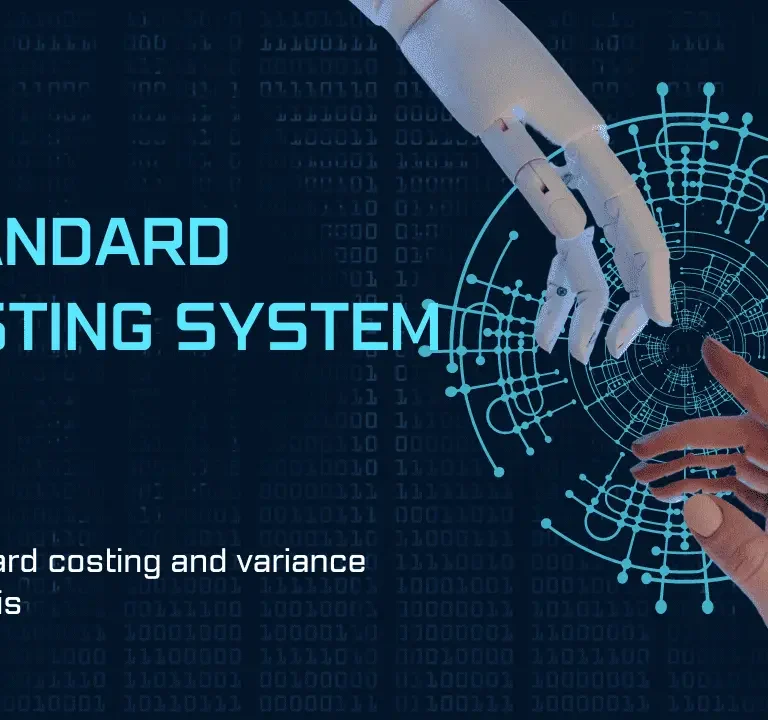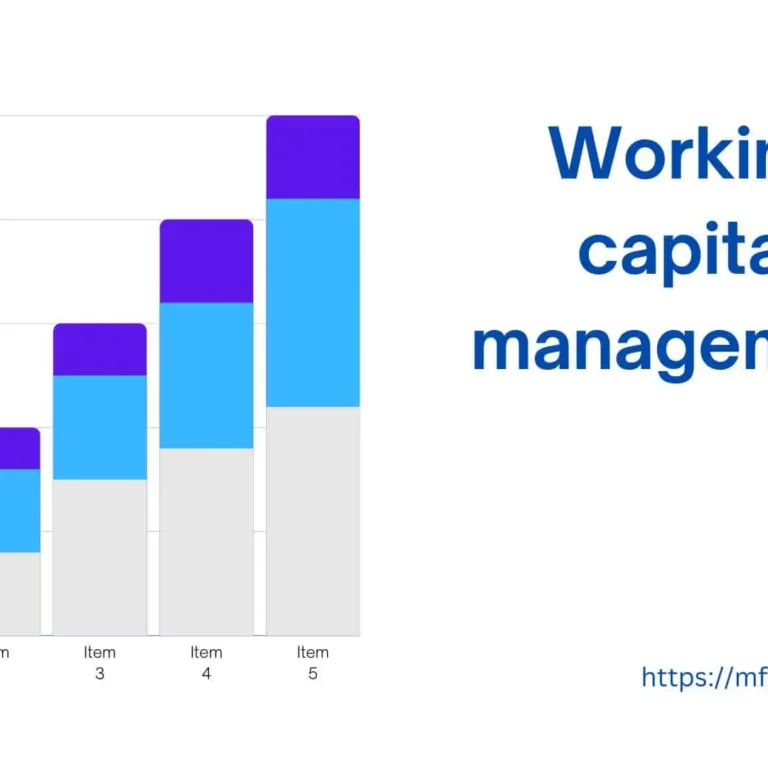What is balanced scorecard?
The Balanced Scorecard is a strategic management framework that provides a holistic view of an organization’s performance by considering a balanced set of key performance indicators (KPIs) across different dimensions. It was introduced by Robert Kaplan and David Norton in the early 1990s and has since been widely adopted by businesses and organizations.
The Balanced Scorecard incorporates financial and non-financial metrics, covering four main perspectives:
Financial Perspective:
This perspective focuses on financial outcomes and performance indicators such as revenue growth, profitability, return on investment (ROI), and cost control. It provides a snapshot of the organization’s financial health and its ability to generate value for stakeholders.
Customer Perspective:
The customer perspective examines indicators related to customer satisfaction, loyalty, market share, and customer acquisition. It helps assess the organization’s effectiveness in meeting customer needs and expectations, as well as its competitiveness in the marketplace.
Internal Process Perspective:
This perspective examines the internal processes and operations that drive value creation and efficiency. It includes metrics related to process improvement, operational excellence, product/service quality, and innovation. It helps identify areas for operational optimization and identifies opportunities for streamlining processes.
Learning and Growth Perspective:
This perspective focuses on the organization’s ability to foster employee development, knowledge acquisition, and organizational culture. It includes KPIs related to employee training, skills development, employee satisfaction, and retention. It also considers factors like technological capabilities, organizational climate, and adaptability to change.
By considering these four perspectives, the Balanced Scorecard provides a comprehensive view of organizational performance beyond financial parameters alone. It emphasizes the importance of a balanced approach, recognizing that success is not solely driven by financial results but also by factors such as customer satisfaction, operational efficiency, and employee engagement.
The Balanced Scorecard framework helps organizations align their strategic objectives with performance measures, communicate strategy effectively across the organization, and monitor progress toward achieving strategic goals. It enables a more comprehensive understanding of performance, facilitates decision-making, and promotes a balanced focus on multiple aspects of organizational success.
Objectives of a balanced scorecard
Strategic Alignment:
The BSC aims to align the organization’s strategic objectives with its performance measures. By linking key performance indicators (KPIs) to the organization’s strategic goals, the BSC helps ensure that every aspect of the organization’s operations contributes to its overall strategy.
Balanced Perspective:
The BSC encourages a balanced view of performance by considering multiple dimensions beyond just financial metrics. It takes into account customer satisfaction, internal process efficiency, and learning and growth factors, enabling a more comprehensive assessment of organizational performance.
Performance Measurement and Management:
The BSC provides a structured approach to measure and manage performance. It establishes a set of KPIs that reflect the organization’s goals and helps track progress toward achieving them. This enables monitoring, evaluation, and effective decision-making based on data-driven insights.
Communication and Transparency:
The BSC enhances communication and transparency within the organization. By clearly articulating strategic objectives and associated KPIs, the BSC framework ensures that everyone understands the organization’s goals and individual roles in achieving them. It facilitates a shared understanding of performance expectations and encourages collaboration across departments.
Accountability and Focus:
The BSC promotes accountability by setting clear performance targets and measures. It holds individuals and teams accountable for their contributions to the organization’s strategic objectives. By providing a framework for goal-setting and performance tracking, the BSC helps maintain focus on priority areas and ensures resources are allocated effectively.
Continuous Improvement:
The BSC supports a culture of continuous improvement. By regularly reviewing performance measures and identifying areas for improvement, organizations can make data-driven decisions to optimize processes, enhance customer satisfaction, foster employee development, and drive innovation.
Long-Term Success:
Ultimately, the objective of the BSC is to drive long-term success and sustainable performance. By aligning strategy, measuring performance, and focusing on multiple dimensions of organizational success, the BSC helps organizations achieve their strategic objectives, adapt to changing environments, and position themselves for growth and competitiveness.
What is KPI
KPI stands for Key Performance Indicator. It is a measurable metric used to evaluate the performance and progress of an individual, team, department, or organization toward achieving its objectives and goals. KPIs provide a quantitative or qualitative measurement of specific aspects of performance that are critical to success.
KPIs are typically selected based on their relevance to the organization’s strategic objectives and desired outcomes. They should be specific, measurable, attainable, relevant, and time-bound (SMART), aligning with the organization’s goals and reflecting its priorities.
Examples of KPIs can vary depending on the industry and context. For instance, in sales, KPIs could include revenue growth, customer acquisition rate, or conversion rate. In customer service, KPIs might include customer satisfaction scores or average response time. Operational KPIs could focus on metrics like production efficiency, quality defects, or on-time delivery.
The selection of KPIs should be guided by the organization’s overall strategy, ensuring that they provide meaningful insights into performance and progress toward key objectives. Regular monitoring and analysis of KPIs help organizations track their performance, identify areas for improvement, and make data-driven decisions to drive success.
How to develop a balanced scorecard
Developing a Balanced Scorecard (BSC) involves a structured process to ensure alignment with the organization’s strategy and objectives. Here are the key steps to developing a BSC:
Clarify Vision and Strategy:
Begin by clearly defining the organization’s vision, mission, and strategic objectives. Understand the key priorities and outcomes that the organization aims to achieve.
Identify Perspectives:
Determine the four perspectives of the BSC framework: financial, customer, internal process, and learning and growth. These perspectives should align with the organization’s strategic goals and provide a comprehensive view of performance.
Define Objectives and Measures:
For each perspective, establish specific objectives that contribute to the overall strategic goals. Then, identify the key performance measures that will gauge progress toward those objectives. Ensure that the objectives and measures are SMART (Specific, Measurable, Attainable, Relevant, and Time-bound).
Set Targets:
Set realistic targets or benchmarks for each measure. Targets should be challenging yet achievable and aligned with the organization’s performance expectations.
Develop Initiatives and Action Plans:
Determine the initiatives, projects, or action plans needed to drive progress toward the objectives. These initiatives should address the critical areas identified by the BSC and support the organization’s strategy.
Cascade the BSC:
Communicate the BSC framework and its components across the organization. Align departmental or individual goals with the BSC objectives to ensure consistency and focus on shared outcomes.
Implement and Monitor:
Implement the BSC by tracking and monitoring performance against the defined measures and targets. Collect data, analyze results, and provide regular feedback to stakeholders on progress and areas for improvement.
Review and Adjust:
Periodically review the BSC to assess its effectiveness and relevance. Adjust objectives, measures, targets, or initiatives as needed based on changes in the business environment, strategy, or organizational priorities.
Foster a Performance Culture:
Promote a culture of performance management and accountability throughout the organization. Encourage employees to take ownership of their performance and contribute to the overall success of the organization.
By following these steps, organizations can develop a well-defined and aligned Balanced Scorecard that serves as a strategic management tool to measure and drive performance in a balanced and holistic manner.
Practical examples
Here are some practical examples of Balanced Scorecard perspectives and associated metrics for a manufacturing organization:
Financial Perspective:
- Revenue Growth: Measure the percentage increase in revenue compared to the previous year.
- Cost of Goods Sold (COGS): Monitor the efficiency of production processes by tracking the ratio of COGS to revenue.
- Return on Investment (ROI): Calculate the ROI to assess the profitability of investments made in manufacturing operations.
- Cash Flow: Monitor the organization’s cash flow to ensure liquidity and financial stability.
Customer Perspective:
- On-Time Delivery: Measure the percentage of orders delivered to customers on or before the agreed-upon delivery date.
- Customer Satisfaction Index: Conduct regular surveys to gauge customer satisfaction levels and track improvements over time.
- Product Quality: Monitor product defect rates and conduct quality audits to ensure adherence to quality standards.
- Market Share: Measure the organization’s market share within its industry to evaluate competitiveness.
Internal Process Perspective:
- Production Efficiency: Track metrics such as Overall Equipment Efficiency (OEE) and cycle time to assess production efficiency and identify areas for improvement.
- Inventory Turnover: Monitor the rate at which inventory is sold or used to optimize inventory management.
- Process Scrap or Waste: Measure the percentage of waste or scrap generated during the manufacturing process and work towards reducing it.
- New Product Development Cycle Time: Measure the time it takes to bring new products from concept to market to ensure timely product innovation.
Learning and Growth Perspective:
- Employee Training and Development: Monitor the percentage of employees who receive regular training and development opportunities.
- Employee Satisfaction: Conduct employee surveys to gauge satisfaction levels and identify areas for improvement in the work environment.
- Technological Capabilities: Assess the organization’s technological infrastructure and investments to support innovation and efficiency.
- Employee Skills and Competencies: Measure the proficiency levels of employees in key skills and competencies required for manufacturing operations.
Advantages of a balanced scorecard
Balanced View of Performance:
The BSC provides a balanced and holistic view of performance by considering multiple perspectives beyond just financial metrics. It enables organizations to assess their performance in areas such as customer satisfaction, internal processes, and employee development, alongside financial outcomes. This broader perspective helps organizations make informed decisions and avoid overemphasizing a single aspect of performance.
Alignment with Strategy:
The BSC ensures alignment between strategic objectives and performance measures. By linking key performance indicators (KPIs) to strategic goals, organizations can communicate their strategy throughout the organization. This alignment helps employees understand how their efforts contribute to the organization’s overall success, fostering a sense of purpose and direction.
Performance Measurement and Management:
The BSC provides a structured framework for measuring and managing performance. It enables organizations to define clear objectives, set measurable targets, and track progress over time. By regularly monitoring performance against KPIs, organizations can identify areas for improvement, make data-driven decisions, and allocate resources effectively.
Enhanced Decision-Making:
The BSC facilitates better decision-making by providing relevant and timely performance information. It enables managers to assess the impact of decisions on various dimensions of performance and make informed choices based on a comprehensive view. This helps organizations prioritize initiatives, allocate resources strategically, and adapt to changing market conditions.
Communication and Transparency:
The BSC enhances communication and transparency within the organization. It provides a shared language and framework for discussing performance and strategy. The BSC enables effective communication of performance expectations, fosters collaboration across departments, and helps align individual and team goals with organizational objectives.
Continuous Improvement:
The BSC supports a culture of continuous improvement. By regularly tracking performance against targets and identifying areas for enhancement, organizations can focus on continuous learning, innovation, and process optimization. The BSC framework encourages organizations to identify and implement best practices, share knowledge, and foster a culture of innovation and improvement.
Stakeholder Engagement:
The BSC promotes engagement with various stakeholders, including employees, customers, and investors. By incorporating perspectives such as customer satisfaction and employee development, the BSC ensures that the organization’s performance is evaluated from multiple angles, addressing the needs and expectations of different stakeholders.
Challenges in balanced scorecard
While the Balanced Scorecard (BSC) offers numerous benefits, there are also challenges associated with its implementation. Some of the key challenges in using the BSC include:
Data Collection and Measurement:
Gathering accurate and reliable data for measuring performance indicators can be a significant challenge. It requires implementing proper data collection systems, ensuring data quality, and establishing appropriate measurement methodologies. Inconsistent or incomplete data can affect the reliability and validity of the BSC metrics.
Subjectivity in Measure Selection:
Choosing the right measures and indicators for each perspective of the BSC can be subjective and influenced by individual biases. There may be debates or disagreements over which measures truly reflect the organization’s strategic goals and objectives. It is essential to involve relevant stakeholders and have a clear process for selecting measures to minimize subjectivity.
Cascading and Alignment:
Cascading the BSC throughout the organization and aligning individual and team goals with the overall strategy can be challenging. Ensuring that the objectives and targets set at each level contribute to the higher-level strategic objectives requires effective communication, collaboration, and buy-in from all levels of the organization.
Balancing Objectives and Trade-offs:
Balancing objectives across different perspectives of the BSC can be complex. Pursuing goals from one perspective may have trade-offs or conflicting implications for other perspectives. It requires careful consideration and balancing to avoid unintended consequences or prioritizing one perspective at the expense of others.
Resistance to Change:
Implementing the BSC often requires a significant cultural shift within the organization. Resistance to change, lack of understanding, and reluctance to adopt new measurement and management practices can pose challenges. Strong leadership, effective change management strategies, and employee engagement are essential to overcome resistance and foster acceptance of the BSC.
Sustainability and Continuous Improvement:
Sustaining the BSC over the long term and ensuring its continued relevance and effectiveness can be challenging. Organizations must regularly review and update their BSC to reflect changing business environments, strategies, and goals. Without ongoing commitment and monitoring, the BSC can become stagnant or lose its value as a strategic management tool.
Complexity and Overwhelming Information:
The BSC can become overly complex, resulting in information overload. With multiple measures, perspectives, and indicators, there is a risk of overwhelming users with excessive data. Simplifying and presenting the BSC in a user-friendly and meaningful way is crucial to avoid confusion and facilitate effective decision-making.




